A Different Kind of Team. A Different Kind of Adversity. Another Chiefs Super Bowl.
As Patrick Mahomes limped and hobbled and grimaced around Chiefs headquarters, he decided to trick himself back to health. Mind will heal body. Ankle? What ankle?
Well … the one that doctors examined after a divisional playoff win over the Jaguars, their diagnosis a dreaded high ankle sprain—and not a mild one. They labeled the sprain between Grade II (partially torn ligaments) and Grade III (fully torn). “One of those that most guys sit out six weeks for,” Andy Reid, his coach, told Sports Illustrated 10 days before Super Bowl LVII.
Don’t worry about me, Mahomes told anyone who asked. His father wasn’t so sure. Patrick Mahomes Sr. knew his namesake possessed an unusually high pain tolerance, perhaps as a result of playing three sports year-round for most of his life. At times, he wondered if it was more intrinsic, one more thing about Patrick Lavon Mahomes II that defies explanation.
It's fine, his son said. Fine? This ankle, the one he iced, heated, taped, strengthened with resistance bands, soothed with therapies and treated with healing gadgets. This ankle forced so many hours of treatment that he started to bring his family to appointments—otherwise he wouldn’t see his kids at all.
Gonna be all right, he said, knowing he’s not most guys. Had the damage been any worse, Mahomes would not have played against Cincinnati in the conference championship. Had this been Week 2 or 12, he wouldn’t have taken the field, says GM Brett Veach.
“He’s really hurt,” Veach told SI in the days after the win over the Bengals. “He can barely walk. But he’s intent on making sure everyone feels a sense of inner calm.”
Even him. For inspiration, Mahomes would grab his iPhone, call up YouTube and hit play. His coach told him about Willis Reed, the Knicks center who hobbled out for Game 7 of the 1970 NBA Finals despite a torn muscle in his right thigh. Mahomes remembers the night in 2012 when the late Kobe Bryant staggered back on court to shoot free throws after tearing his Achilles. Someone else reminded him of Jack Youngblood, the Rams defensive end who played four games, including the Super Bowl and Pro Bowl, on a broken leg in 1979. Mahomes found clips of all of them, studying, searching, hunting for a distinct type of greatness—severe injury, high stakes—that only a few humans on the planet can relate to.
One game, though, elevated above the rest in his subconscious. It’s from June 1997, when the world’s most famous athlete took the court for Game 5 of the NBA Finals. Michael Jordan staggered, bent over, clutched his stomach, vomited right up until gametime. But he still played, still won, through will and what guts didn’t exit his esophagus. Clips from this game are the ones Mahomes viewed most often, including right before he played the Bengals.
Mahomes knew his ankle wasn’t right—“doesn’t feel good," he told SI a few days after the AFC title game, “definitely hurts, man”—but he also knew it didn’t matter, not for the final three weeks of the season. “It’s mental,” he says. “You can prepare your body to respond even faster than it wants to. You can make yourself go.” He didn’t need to hear anything from the trainers. He would play, without a doubt.
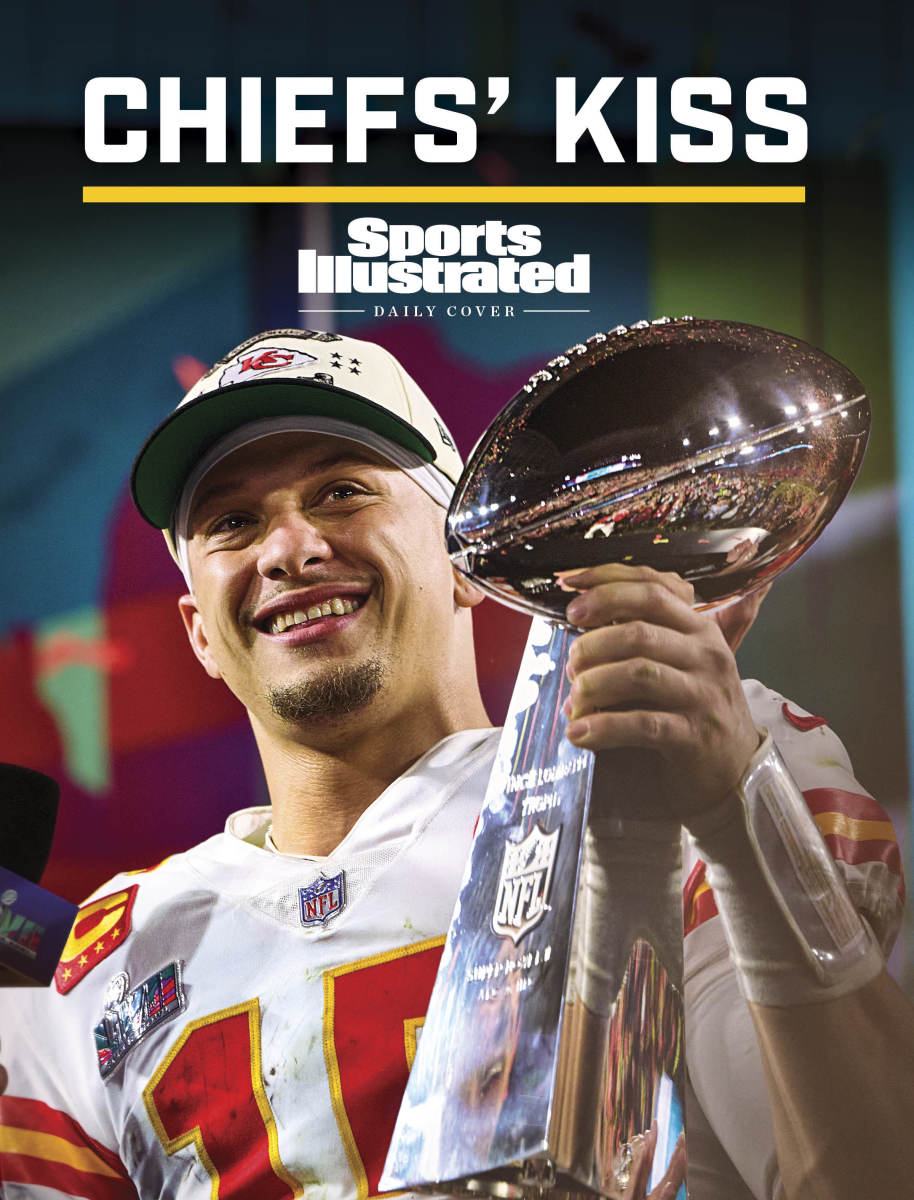
Reid understood, because he understands Mahomes and what drives him. Greatness, more or less. Resilience. “The legends just have a way of, You aren’t going to stop me,” Reid says. “Barring removing a leg or an arm.”
With kickoff approaching for the AFC title game, Mahomes returned to the same clip. “I mean, obviously, the Michael Jordan flu game,” he says. His ankle throbbed. He tweaked the injury, limping and hobbling once more. Coaches continued to plead: Don’t run, don’t run, STOP RUNNING! But late in the fourth quarter, he took off. He’s still not exactly sure how. “I ran,” he says, “to get back to another Super Bowl.”
Clark Hunt’s parents, Lamar and Norma, founded this franchise. They also just loved sports. They always talked about one game they attended, awed by what they saw. It was the same game Mahomes watched for inspiration. High above his team’s home field two weeks ago, Clark Hunt watched what unfolded in disbelief. The thought hit him with staggering force. This was the same thing. Mahomes had his Jordan flu game, the gutsiest performance of his career. At least until, in Super Bowl LVII, he topped it.
Randi Mahomes could see the pain in her son’s face. They kept playing the whole thing on television over and over again. She clutched her grandchildren until she felt better.
It wasn’t easy. Dante Hall, the former star return specialist in Kansas City, told Randi her son was out there playing on the type of injury that ruined his own career. She asked him not to say that. Hall kept wondering: How is he able to go out there?
A memory came back to Randi. Patrick in a basketball gym back in the sixth grade. She yelled at him from the bleachers to hustle, totally unaware, at that moment, that he was running around on a broken foot. Patrick wasn’t going to tell.
But there he went Sunday, disappearing into Kansas City’s locker room, in obvious agony, again. This time, the Eagles. This time, down by a touchdown, soon to be more. With 1:33 to go in the second quarter, while trying to evade a sack, Mahomes was wrapped up by his industrially taped right ankle. His foot pivoted outward like he was passing a soccer ball, then got wedged against his opposite heel, bending the joint like a saloon door while Mahomes fell to his knees.
The final seconds of the second quarter waned, and Mahomes removed his helmet on the sideline and leaned back on the bench, turning his body into a position reminiscent of a broken beach lounger. He needed to put his head on a trainer’s shoulder, and, for a moment, looked less like a person willing his team to the Super Bowl for a third time and more like a baby-faced, 27-year-old human who can, actually, feel pain.
As the third quarter started, he left the pocket and tried to run like nothing happened. He flung a first-down pass to Travis Kelce as Eagles defensive end Josh Sweat flattened him. A few minutes later, Mahomes left again, stumbling after losing his footing and knocking into left tackle Orlando Brown’s backside. He escaped to his right, faked a pass, tucked the ball and began to waddle toward the goal line, juking a defensive back like a delivery bike on Fifth Avenue. It was effortless enough to generate an internet conspiracy theory after the game, that Mahomes was faking the re-sprain of his ankle to lull the Eagles into false security. If only he were so lucky.
Donovan McNabb, still one of Reid’s closest friends, likes to make fun of the way Mahomes runs. He tells anyone who will listen that the kid moves like his feet are on fire. That was literal now, with each step inducing a stabbing pain. His gait was quickened to reduce the amount of time spent colliding cleats with grass.
Reid helped Mahomes but didn't baby him. During the Chiefs’ final days of preparation before the game this week, under beautiful cloudless skies on a practice field enshrouded by orange trees, Reid put him through test after test. He’d roll Mahomes to his right and left. He’d make Mahomes take snaps from under center, which is more difficult when he can’t firmly plant his feet.
Mahomes wouldn’t let Reid call it any other way. The coach would ask, but he already knows the answer. “Half of it,” Reid says, “is how strong he is in the mind.”
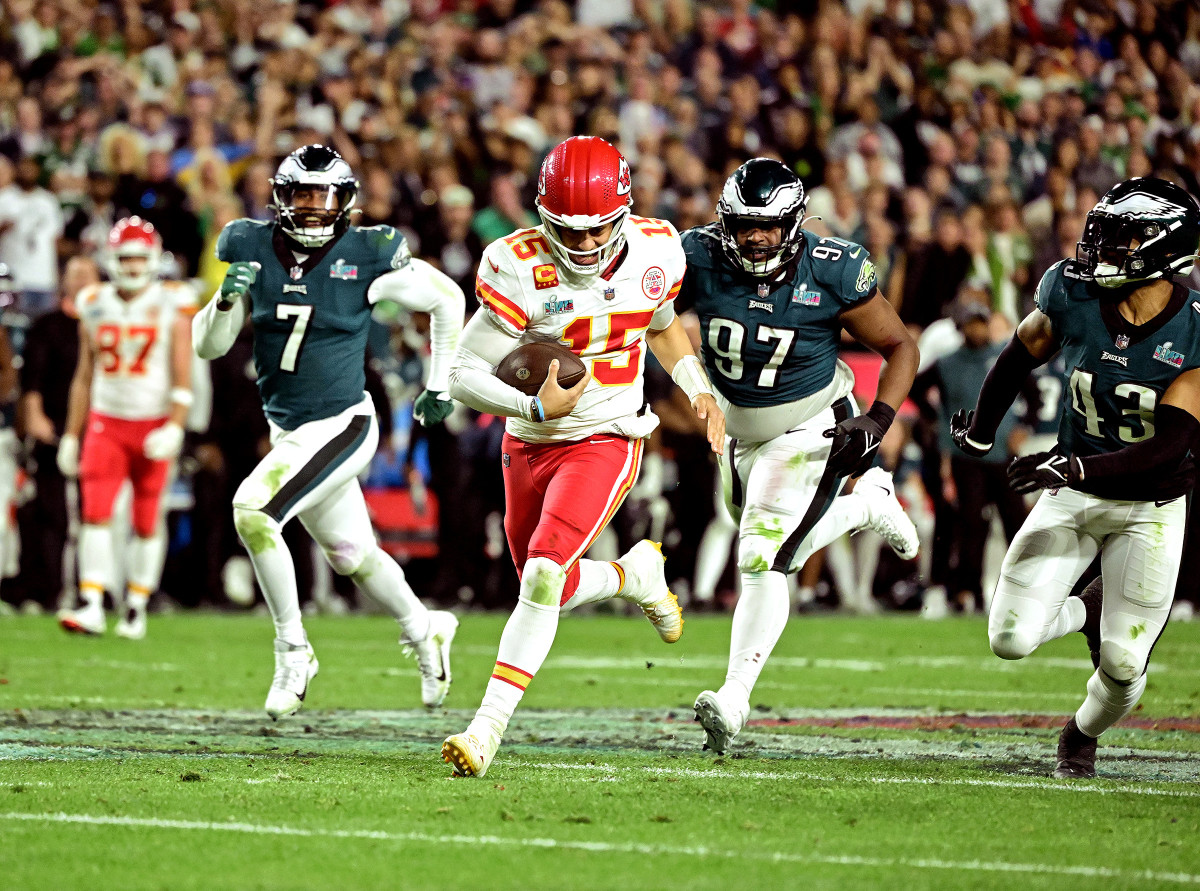
The fourth quarter started, and the Chiefs feverishly motioned their fastest receivers, Kadarius Toney and Skyy Moore, on a handful of snaps. At first, they were mostly decoys; little prodding maneuvers that served to open larger throwing lanes for Mahomes and bigger cushions for other wide receivers. But the moment the Eagles started telegraphing their reaction to those motions, the Chiefs began to gash them. First, Toney. On a third-and-3 from the Eagles’ 5 with 12:09 to play, he started in motion and then, at the exact moment he convinced his assigned defender, cornerback Darius Slay, that he was going to continue through to the opposite side of the formation, he pivoted in the other direction. There were no Eagles in that vast swath of space. Mahomes could celebrate the moment the ball left his hand, hands in the air, tongue out, not unlike Jordan. Reid called the same play but on the opposite side, this time using Moore, for another touchdown.
The Chiefs sustained a game-tying Eagles counterpunch with five minutes to play. Mahomes, fittingly, got his team into position for the winning field goal on his bad wheel. It was a 26-yard run that took the Chiefs from the outer reaches of field goal range and into the red zone. He initially evaded bodies in the pocket. Then he was running. Sprinting. He tucked the ball in his right arm and blew by linebackers and defensive backs. Healthier people. Men on two good legs.
After hosting four straight AFC championship games, after the Super Bowl win (LIV), the Super Bowl loss (LV) and the blown conference title game lead against the Bengals a year ago, Veach encountered a decision that “difficult” fails to capture. Tyreek Hill was arguably the best wideout in the NFL and inarguably the league’s most dangerous deep threat. But Veach, in all of Kansas City’s winning, had created a problem. He had too many elite players and not enough cash and cap space to pay them.
He met with Hill’s reps wanting to at least try, to convey that he wanted Hill back and planned to make an offer. Hill had separated himself, they responded, even among the NFL’s best receivers. Plus, the wide receiver market was about to explode; the average salary of an elite wideout jumped from around $20 million to around $30 million in one month last spring. Veach agreed. But agreeing didn’t change his calculus. “We were forced to enter a realm that didn’t have any certainty,” he says now.
The Dolphins deployed Veach’s restrictive parameters against him. They didn’t just woo Hill. They took him straight to the bank vault, offering $120 million over four years. The guaranteed money—$25.5 million to sign, $72.2 million overall—was prohibitive. In March, the teams struck a deal.
Reaction landed somewhere between mystified and apoplectic. In the previous two seasons, Hill had racked up 198 catches. When fellow wideouts Byron Pringle and Demarcus Robinson bounced in free agency soon after, the Kingdom wondered whether their architect had gone mad. Who would start on the outside? Veach?
“They were upset that they lost a few players,” says Donna Kelce, mother of the elite target who returned. “But they knew they still had talent. They just needed to find players to catch the ball.”
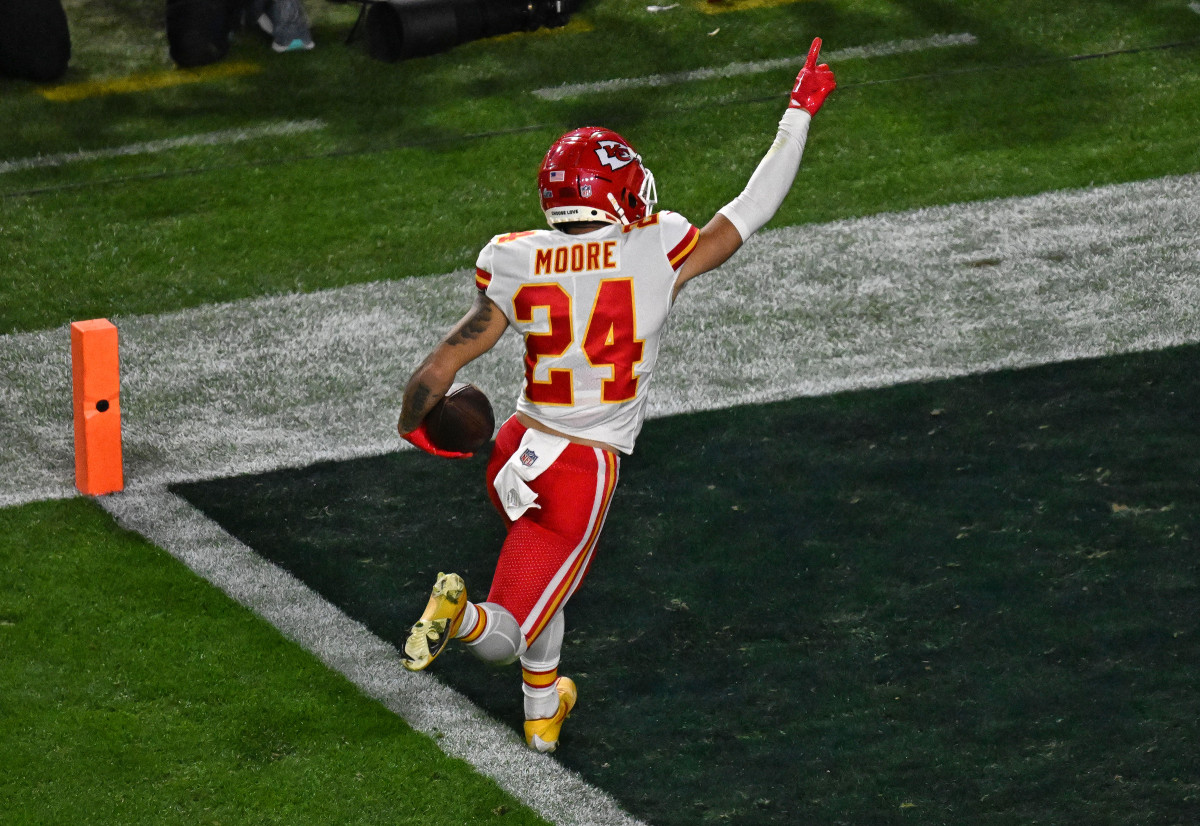
Veach couldn’t get swept away by the tsunami of angst. Not with the retooling that remained. The Hill trade, if viewed in the most positive of lights, netted Kansas City the Dolphins’ first-, second- and fourth-round picks, along with two selections in 2023. This gave Veach 12 selections with which to work, double his ’21 allotment.
In the first round, Veach salivated at how the board lined up, and he managed to snag two of his highest-ranked players in cornerback Trent McDuffie (after trading up with New England) and defensive end/pass rusher George Karlaftis. On Day 2, Kansas City took Moore (second round), safety Bryan Cook (second) and linebacker Leo Chenal (third). In the seventh, Veach nabbed a running back he adored, adding Isiah Pacheco to the backfield.
The Chiefs made 10 selections, netting a bounty of new, young talent: five defensive backs, seven defenders, two linemen and depth aplenty. Of those 10 draftees, nine wiggled onto the first 53-man roster. Eight combined to account for 3,721 regular-season snaps, good for seventh most by any class this season.
Would this grand retooling work? No one knew. But Veach believed the Chiefs were better positioned than most thought.
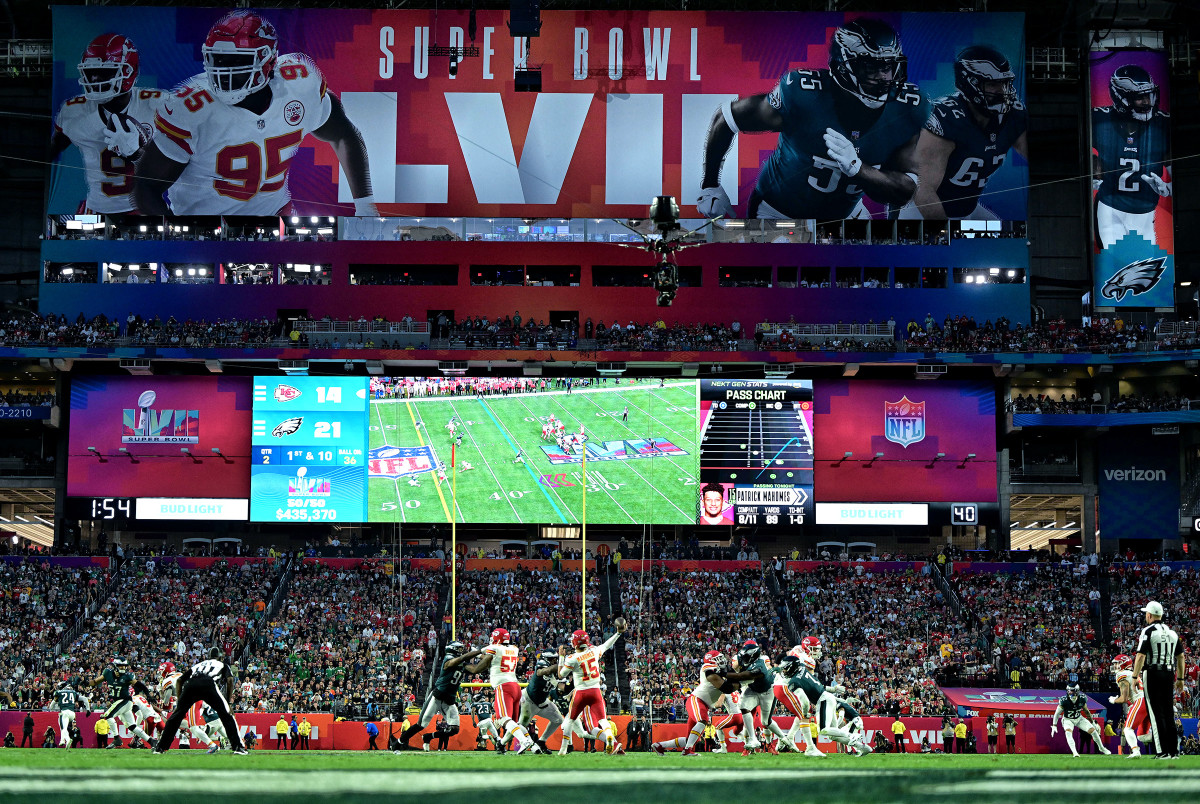
Amid that widespread concern over the Chiefs’ reconfigured offense, Mahomes pulled out his iPhone and made two calls that changed Kansas City’s season. “I knew it was going to be different, man,” he says. “We didn’t have a lot of the guys that were here the year before.”
First, he dialed Reid, then offensive coordinator Eric Bieniemy. He asked both the same question: Would they mind if he remained in Texas, at his home training base, but invited all of his offensive teammates? He threw in a twist. He didn’t want to hold informal workouts, like many quarterbacks. He wanted to lead Phase 1 of Kansas City’s offseason program, wanted to bond and teach. Both coaches embraced the idea because of what it signified—growth, wherewithal, ownership.
Mahomes had never before adjusted to more than two new receivers. Three free-agent signees—JuJu Smith-Schuster, Marquez Valdes-Scantling and Justin Watson—came to Fort Worth. With input from the coaches and an assist from his private quarterbacks coach, Jeff Christensen, Mahomes devised a schedule with Kelce. The group would meet every morning. They would practice routes for between 75 and 90 minutes, searching for timing and rhythm. They would hold virtual meetings with the coaches after that to install the next day’s plays; break down film, sharing insights and preferences; and stay late for anyone needing extra work.
Christensen was in attendance, but he mostly ceded the floor to the new professors. He watched an offense coalesce without a single Chiefs coach present. Concepts. Routes. Spacing. All grounded not in what typically would be done but in exactly how Mahomes preferred it.
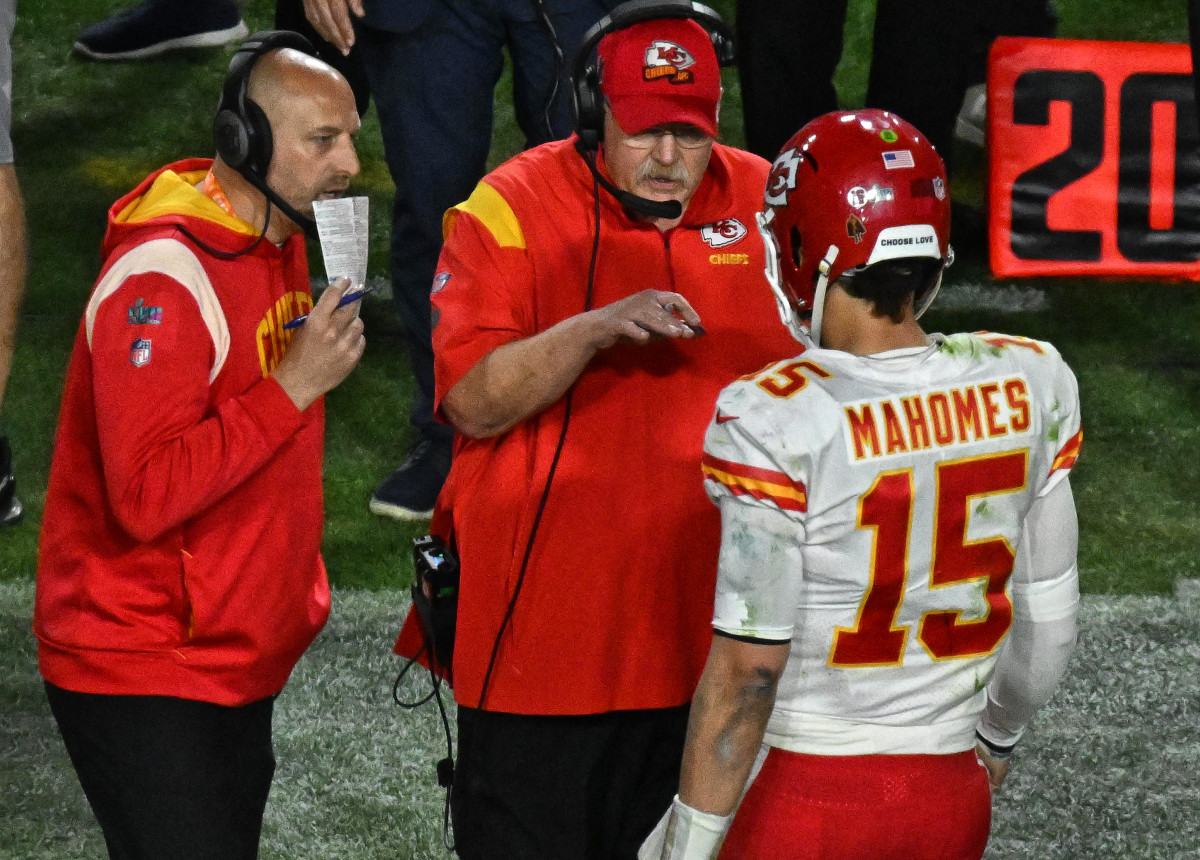
As Reid took his coach’s whistle back for Phase 2, he says, “They seemed to have a good connection. And so we just kept on with it.”
At training camp, Veach noticed Mahomes carrying the Fort Worth spirit into interactions with his teammates. With fewer two-a-days and far less contact, teams typically conduct practices in the morning and walk-throughs in the afternoon. Mahomes wanted to use the extra time in their collective schedule, so he started showing up to special teams practices. Professor Kelce started joining him. So did the new receivers. Veach says that all injected “some extra buzz.” The group would head in afterward and watch film together but without their coaches present. Mahomes critiqued their practice tape.
“I really want them to hear from me how I’m going to process this,” he told Reid.
The week before the AFC championship game, the executive who engineered the Chiefs’ latest and most distinct season of dominance sat on his living room couch. Veach was watching TV, trying—and failing—to relax. His daughter, Ella, came downstairs, joining the GM she calls Dad, and asked the obvious. “Are you excited for this weekend?”
“Super excited,” he responded.
On a scale of 1-10? “I’m a 10,” he said. “Through-the-roof excited.”
Ella smiled. “Me, too,” she said. “I hope to perform well for everybody on Friday.”
She meant her gymnastics meet that Friday. It required driving to Nebraska roughly 48 hours before the Chiefs would host their fifth-straight conference title game, an NFL first. “There’s no way I’d miss it,” he said.
Like Mahomes, he found a way. And, as he drove back toward Missouri in the middle of the night, he knew precisely who taught him about what matters: Andy Reid.
Veach owes his career to Big Red. He started in pro football in 2004, as a coaching intern with the Eagles. In ’07, the Eagles promoted him to Reid’s administrative assistant. Before leaving for vacation, Reid assigned Veach his first project: Study how the Colts’ defense morphed from terrible to stout. Analyze every game from a defensive perspective, he instructed. Then lay out which factors enabled the abrupt shift.
Veach tried everything: game analysis, video clips, data graphs, historical comparisons—the works. He printed the document, read it over and over for typos and errors in logic, made changes, printed it again and went to an office supply store. He bought a binder and placed his masterpiece inside, then beelined for Reid’s desk. Reid looked back at him, then down at the binder, then back at him, then down. The coach pointed to a sticker affixed to the front from the office supply store. He handed the binder back to Veach. He never read a single word of the report. Details matter.
Despondent, Veach called his parents. “Oh, my God, I just screwed this up. I don’t know if he wants me to come back. I’m not going to last that long. I just don’t think I’m cut out for this.”
Reid actually thought the opposite. One late night in October 2008, they were sitting in Reid’s office, studying film. The fireworks exploding out the window announced that the Phillies had won the World Series. Sirens blared from police cars headed toward the ballpark for the revelry certain to ensue. Both loved the bottomless depth of the, ahem, passion displayed by local sports fans, how it tethered all of Philadelphia to the same space, a sporting soul.
“One day, we’re gonna do this, you know?” Reid said.
Among hundreds of lessons, Reid told Veach he didn’t need to pound tables daily to make points. But when he did pound, he needed to hit that f---er hard. In doing precisely that, Veach became Reid’s right hand. Reid liked his eye for talent. When asked for an example, he cites four: three Eagles (LeSean McCoy, DeSean Jackson, Fletcher Cox) and the single greatest Chief the franchise ever drafted.
In handing Veach more responsibility, confidant and former colleague Louis Riddick believes that Reid freed his own mind to focus on coaching and developing a certain quarterback. “A whole ’nother level,” Riddick says.
Hence the poetic symmetry. For all those years in Philadelphia, Reid was tagged as an offensive innovator who couldn’t manage game clocks or win Super Bowls. But while he kept trying—there’s that resilience again—he took a smart, hungry intern and helped him develop into an astute, empathetic evaluator. Reid basically built the exact general manager he wanted. Veach found Reid a generational quarterback. Together, all won this franchise its first Super Bowl in half a century.
Reid found Veach that night three years ago. “We’ve come a long way from seeing those fireworks go off at Citizens Ballpark,” he said.

Mahomes took the starting job in 2018 and only one year later won league MVP and Super Bowl LIV, at age 24. “It all happened so fast,” he says. “I thought that’s kind of how it went.”
The next three years, instead, sometimes felt like three lifetimes: injuries, gutting defeats, roster turnover and all the rest. His life is remarkably different now. There’s Brittany, his wife, their daughter (Sterling) and their son (named after his dad).
Two days after clinching a Super Bowl berth, he was gushing about his earned status as a “helicopter parent,” which he learned from Randi. Apparently, elite vision and processing speed extend from field into living room. “Brittany gets mad at me,” he says. “But I have an eye for every corner and every single place that they can go in. I’m always following Sterling around, playing man-to-man defense.”
Mahomes also evolved on the field, shifting from electric to slightly less-electric—and this season, to endlessly, Buddhist-monk patient.
In late October, Reid met with Monday Night Football broadcasters in advance of Chiefs-Raiders. The group included Riddick, who spoke to Reid in their shared language. When Riddick watched the Chiefs, he saw more two-tight-end sets and more 12-personnel (one back, two tight ends, two receivers) compared to recent seasons. It spoke to an offense designed to exploit the middle of the field.
“Well, you know I used to always be that way when I was in Philadelphia,” Riddick recalls Reid saying. “I got away from it here in Kansas City, because our better players were on the perimeter. And then we got Patrick.” True. All of it. The Chiefs had speed, had Hill, had Kelce and had a quarterback with a bazooka for an arm. They threw deep because they could, because it worked. But eventually defenses adjusted.
This season, Reid told the crew, he went back to “really who I am.” The middle of the field presented the shortest throws, made against the most vulnerable defenders, where individual matchups could be more easily exploited.
In recent years, Reid mentor Mike Holmgren liked to tease his mustachioed pal, saying he could no longer recognize what he taught Reid in the Chiefs’ offense. When Holmgren watched Reid’s offense this season, he came to the same conclusion as Riddick. There was that shallow cross game he knew and loved! And Kelce, the tight end, running option routes! Reid changed so much he eventually changed back.
Reid told SI that some of these back-to-the-future implementations owed more to personnel changes born from necessity. The Chiefs added more variance, more checkdowns. They ran the ball more. And when they did all that, the offense opened up and the deep plays returned but more organically, part of the offense’s growth from Fort Worth to another Super Bowl.
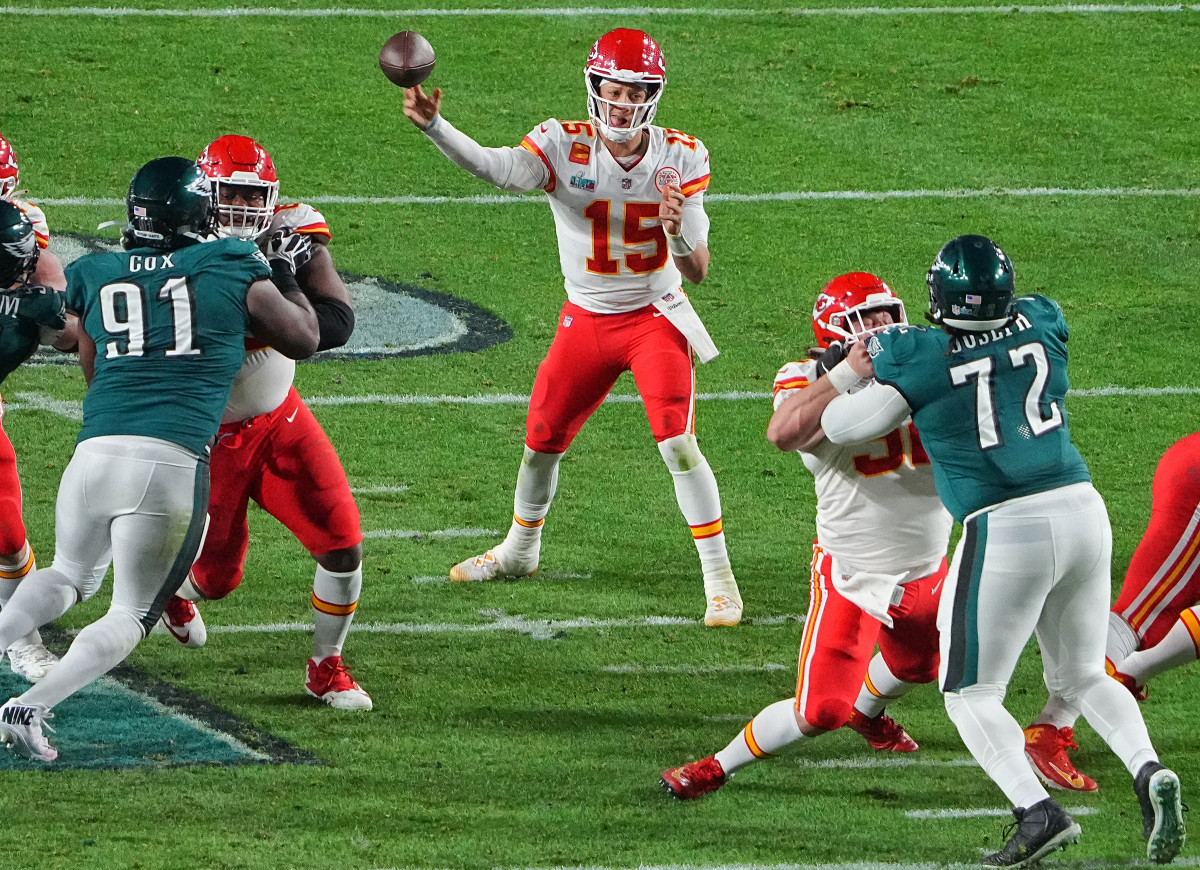
Tammy Reid marvels at Mahomes’s impact on her husband. “It’s like a father-son groupthink,” Tammy said two years ago. “Patrick coming to Kansas City was a rejuvenation for him.” It’s also the primary reason, she says, why Reid signed an extension keeping him in K.C. through 2025.
Throughout another dominant season, two typical coaches (Reid, Bieniemy) combined with two atypical players (Mahomes, Kelce) to fashion an offense that caught the NFL by surprise. Sure, Mahomes threw less often to receivers. But Kelce caught a career-high 12 touchdown passes. His target share (23.3%) ranked higher than every other tight end in the league. On Sunday, the duo connected for their 14th postseason score, good for second-most all time and only one behind Tom Brady and Rob Gronkowski, with what seems like many postseason games still to come.
Christensen, Mahomes’s private quarterbacks coach, contends that Mahomes-Kelce “has to be the greatest combination ever.”
The variance outside of their connection opened more options elsewhere. In previous seasons, defenses often doubled Hill and Kelce because so many plays were designed specifically for them. Now, everyone got designs, and Mahomes spread the ball around like an offering plate, which helped Kelce continue to get open. Mahomes threw multiple touchdowns to five receivers, a career high.
Mahomes changed. Reid changed. The dynamic between Reid and Mahomes changed. The dynamic between Mahomes and Kelce changed. The only thing that didn’t change was the Chiefs’ run of success.
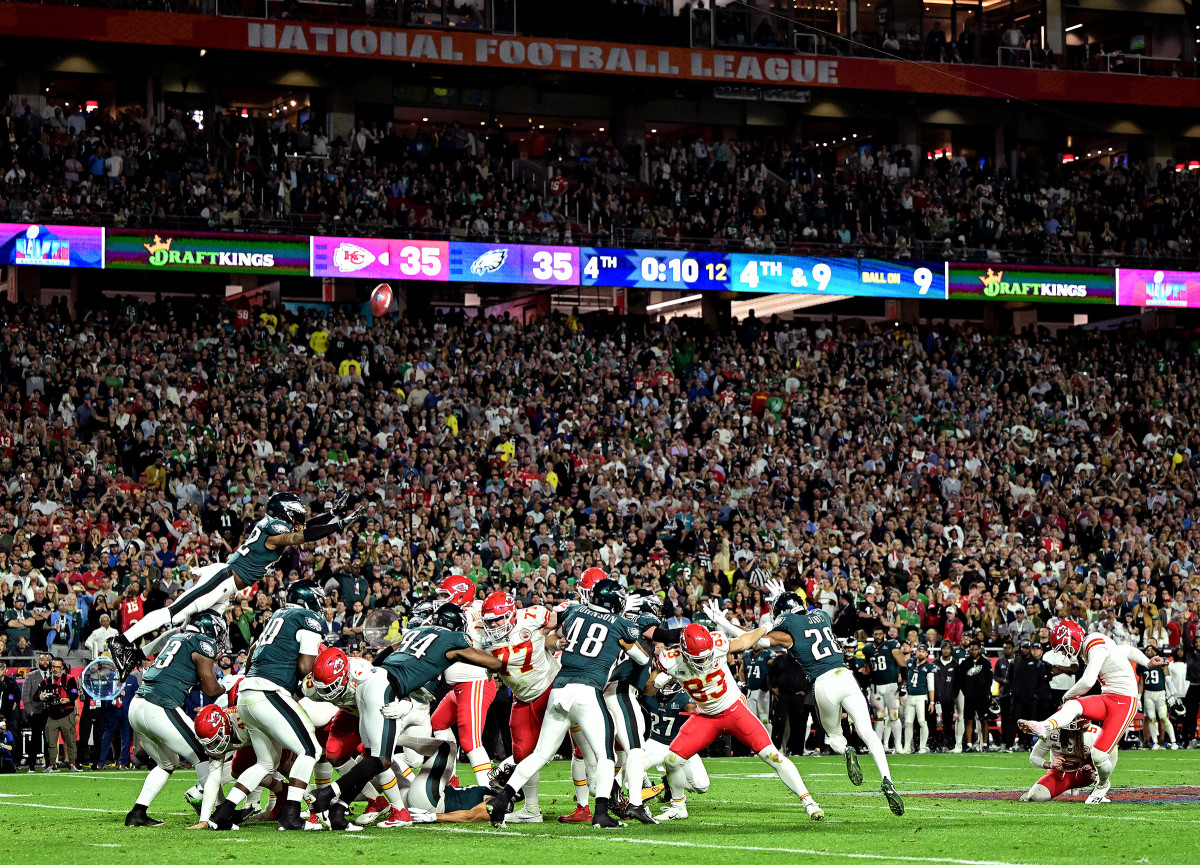
On Jan. 29, greater Kansas City froze over. Temperatures dipped, but with an AFC championship game rematch mere hours away, the Kingdom gathered in the parking lots. They wore snow boots and layers upon layers, firing up barbecues with gloves on, until burnt ends and brisket combined for a winter barbecue festival.
Hunt saw this beautiful scene on his drive in. He wouldn’t miss the revelry in person. He wanted to walk the parking lot, just as his father did before every home kickoff for decades.
As he stepped into the frigid air, his breath formed cloud puffs as he walked toward all the tailgaters with team president Mark Donovan. They strolled and stopped, smelled and talked, for nearly 45 minutes. Hunt says he could sense confidence from the crowd that Mahomes’s ankle injury had healed enough for the Chiefs to win. They begged him, after seeing it slip away last year, to bring another trophy named after his father back home, where it belonged.
Here they were, on the precipice once more—offense tweaked, depth bolstered, concerns addressed. But that night eventually hinged on a play that should have never happened. Mahomes took off on that late fourth-quarter sprint, dashing on a bum wheel toward the sideline and immortality. “I really couldn’t run,” he says. “You could see it a couple different times in the game, where I wanted to push off and my leg wouldn’t let me, man.”
The scramble and an ensuing unnecessary roughness penalty pushed his team into position for the winning field goal. (Mahomes called it the best play of his career to that point.) At that moment, only those who play through pain unfathomable to even the majority of elite athletes understood. Christensen says he asked Jordan once whether he knew he could surmount even a wicked flu that emptied his insides. “I just got up,” Jordan said, according to Christensen. He asked Mahomes the same thing, after all those no-look passes and whirling-dervish spins. Did they need to drill for those? Mahomes began giggling. “No,” he said. “I have no idea how I do them.”
“Your mind blocks it out,” Youngblood says. “It reduces the pain to where you can run, like [Mahomes] did, briefly. When he’s running, he’s having an out-of-body experience.”
In some ways, Mahomes was acting, says Eric Stonestreet, a Chiefs superfan and the actor who played Cameron Tucker on the long-running sitcom Modern Family. He can relate to the spirit involved, the desire to do something that most wouldn’t dare think about, let alone attempt. “There’s a degree of sandbagging with Patrick Mahomes,” Stonestreet says.
Christensen sees the same and something else—a throwback to athletes from previous generations, among the most resilient stars in sports. “Just when you think it’s over, that the last of the old-soul warriors are dead, here he comes. It’s almost weird, almost intimidating. Just when you think you’re never going to see a guy like that again, it happens.”
He pauses. Laughs. Resumes. “The Jordan flu game, right?”

Late Thursday, with kickoff a mere 72 hours away, Veach and his family—wife, Alison; Ella; and twin boys Elijah and Wylan—climb out of an SUV to do what Veach has always done: climb higher. His quarterback is headed to a ceremony in downtown Phoenix to collect another MVP award. But Veach came to this Super Bowl intent on experiencing more of the experience. Hence the trip to Camelback Mountain, where the Veach clan, clad head to toe in Chiefs gear, mixes with joggers, college students and tourists.
At the trailhead, Veach takes a rare pause to look skyward. The mountain’s hump is mostly granite that forms from volcanic activity taking place out of sight, underground. The so-called Camel’s Head Formation is all sedimentary rock, which develops from the particles that form and fall from any water source nearby. Which one is he? Well, his work takes place mostly out of sight, if not underground. He must be the hump. But the Chiefs, as a football team, form from the players who he sprinkles into the same place, until they coalesce, under Reid’s guidance, into something more. He’s both.
The climb begins, and there are legacies to consider, each tied to the other until they’re impossible to separate. The Super Bowl LVII MVP is more than a cornerstone, more than elite, more than a superstar and more than transcendent. Mahomes’s first five seasons as an NFL starter constitute the best start for a quarterback in NFL history. Better than Brady. Better than Manning. Better than Rodgers, Montana, Young, Marino and the rest.
As one-half of the first Super Bowl featuring two Black starting quarterbacks, Mahomes also understands what he means to other people. The NFL is changing—no more Mannings, no more Brees, and now, no more Brady. Of the four quarterbacks who started the conference championship games, Mahomes was the oldest, in front of the new wave.
Hunt says he wouldn’t be surprised if, “in 15 years or so, people are looking at Patrick as the greatest ever.” A certain recent retiree might scoff at that contention, but Tom Brady’s exit opened another door that Mahomes sprinted through on that injured ankle. “He will be the face of the NFL,” says Hall of Fame quarterback Warren Moon.
On the mountain, the air is thinner than expected, the breathing laborious and heavy, while Veach continues to consider what another triumph would mean. The End? Veach doesn’t think so. There’s too much left to define, to add. Already, Riddick believes Reid ranks among the greatest coaches and play-callers in NFL history. Smith believes he’s “right up there with [Bill] Belichick.” Reid wins so much now, with striking, legacy-reshaping consistency, that Holmgren likes to jokingly tell him, “Jesus, this is getting boring.” “He’ll be viewed,” Holmgren says, “as one of the greatest who ever coached.”
For almost a quarter century, others have shaped and shifted Reid’s legacy for him. Ten days before Super Bowl LVII, he’s asked how he, Andy Reid, wants to be remembered, even if he’ll never control his narrative in full. He pauses for a few seconds, then sort of snorts. “No one’s ever asked me that before,” he says. He offers two defining characteristics: honesty and hard work. “Those are the foundation of everything else.”
Higher and higher the Veach family climbs. The twins are experts, and they scamper ahead, then drop back down. All three kids ascend whatever rock walls they can find. Veach tells them to watch out for snakes.
The family pauses periodically for pictures, with Phoenix lit up and looming in the background. They could send out a dozen Christmas cards next winter. He’s not looking back, at the Hill trade or the draft or the Bengals triumph. He’s asked, yet again, once more, whether it bothers him, his ratio of impact created to credit received. He thinks about his answer for 10 seconds, then comes back with, essentially, not really.
Reid doesn’t control personnel in Kansas City and hasn’t for a long time. Both he and Veach benefit from Mahomes’s all-galaxy talent. But that’s sort of the point. In more than one recent season, Hunt visited Veach when it became clear he wouldn’t win the league’s Executive of the Year award. “We all know where the best GM in the league resides,” he’d say, directly, to that GM. “And that’s here, in our stadium.”
Veach says none of this on the mountain. Toiling for Reid, winning alongside him, with Patrick, that’s the gratifying part. Still, it’s surreal, even a little weird, for Riddick to see how far the Reid-Veach relationship evolved. “They’ve been together for so long now,” Riddick says, “going all the way back to when Brett was going to fetch Big Macs for him for a late-night snack.”
The Chiefs’ success in the past five seasons—the AFC title game loss, the Super Bowl win, the Super Bowl loss, another AFC title game loss and, now, another ring—starts with the coach and the general manager he shaped.
The Veach family reaches the halfway point, only to run into a park ranger, who politely asks that everyone head down. Veach clutches the railing as he descends. His kids slide down. They’re asked whether the hike or the game will be harder. They all say, nearly in unison, the hike!
The sun drops below the horizon as the family nears the SUV. Veach mentions the Kevin Durant trade, the proximity, his executive brain never fully disengaged.
One kid’s shoe comes off. Another drops the blue Gatorade they were carrying. As the towering rocks fades in the distance, Veach considers the only mountain he wants to conquer. That climb, to another championship, is almost over, the summit in view, kickoff thisclose. When one of his children tears up climbing down, owing to a fear of heights, Veach grabs the child’s hand and tells them, “If you fall, we’re going fall together.” That’s it. That’s the Chiefs, their coach, their GM and their quarterback. Only they didn’t fall together. They just keep climbing, behind, perhaps, football’s Michael Jordan, the quarterback who turned in his own flu game. Twice.
Additional reporting was provided by Ben Baskin
